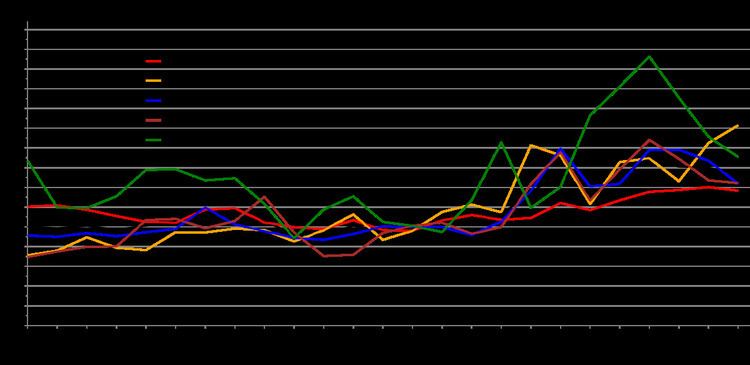 | ||
Food prices refer to the (averaged) price level for food in particular countries or regions or on a global scale. The food industry's contribution to the price levels and fluctuations come from the food production process, food marketing and food distribution. Source of uncontrollable price fluctuations are varying crop yield from excess supply to harvest failure and food speculation activities. It is speculated that already the global climate change could be a major factor behind rising food prices. A continuing drought in South Africa may - amongst other factors - have food inflation soar 11% until end of 2016 according to the South African Reserve Bank. To a certain extent, adverse price trends can be counteracted by food politics. When food commodities become too expensive on the world market, food security is in danger especially for developing countries. In keeping with the supply and demand-principle, global prices will on average continue to rise with the growing world population.
Contents
Global differences
Sharp dramatic rises in the food inflation as happened during the 2007-08 world food price crisis have been more pronounced in developing countries than in the OECD and North America in particular, however.
Consumer prices in the rich countries are massively influenced by the power of discount stores and constitute only a small part of the entire cost of living. In particular, Western pattern diet constituents like those that are processed by fast food chains are comparatively cheap in the Western hemisphere. Profits rely primarily on quantity (see mass production), less than high-price quality. For some product classes like dairy or meat, overproduction has twisted the price relations in a way utterly unknown in underdeveloped countries ("butter mountain"). The situation for poor societies is worsened by certain free trade agreements that allow easier export of food in the "southern" direction than vice versa. A striking example can be found in tomato exports from Italy to Ghana by virtue of the Economic Partnership Agreements where the artificially cheap vegetables play a significant role in the destruction of indigenous agriculture and a corresponding further decline in the already ailing economic power.
